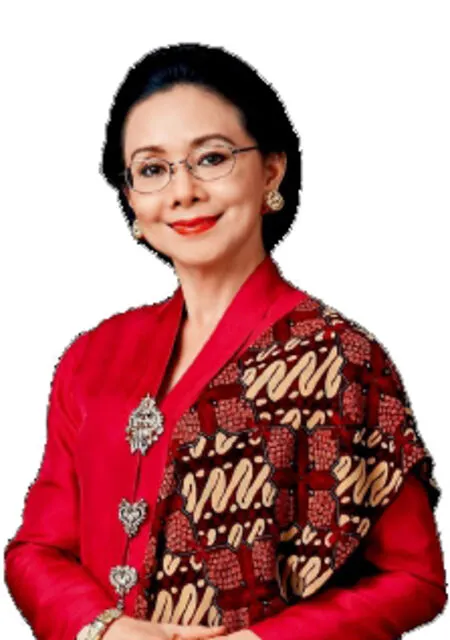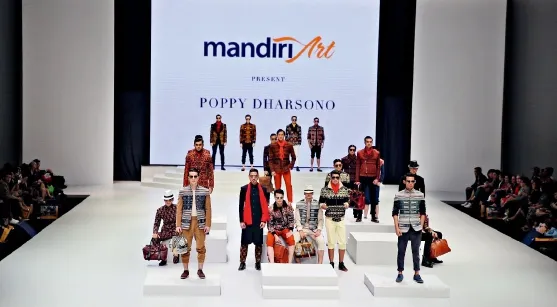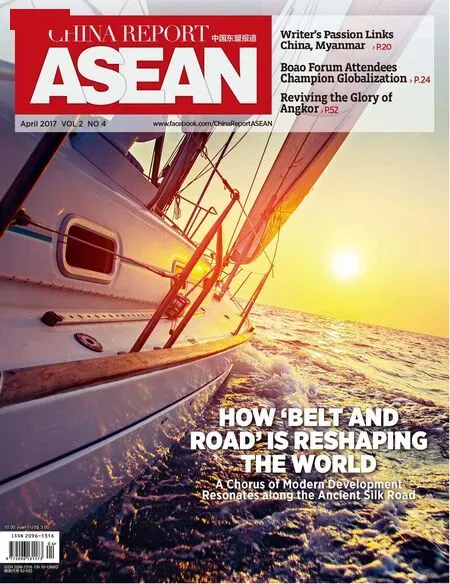Forging Partnerships In the Fashion Industry
By Tian Yuan
Forging Partnerships In the Fashion Industry
By Tian Yuan
An interview with Indonesian senior fashion designer Poppy Dharsono

Indonesia is endowed with diverse cultural resources, which, complemented by its increasing cultural inclusion, have helped fuel the development of our fashion culture.
“Fashion is not just an art; it combines art and industry. As an integral part of the creative economy, fashion artistically embodies economic and social progress,” explained Poppy Dharsono, a senior Indonesian fashion designer and chairperson of Indonesia Fashion Week (IFW) 2017, in an exclusive interview withChina Report ASEAN.
China Report ASEAN:Could you give a brief introduction to our readers about IFW 2017?
Poppy Dharsono:IFW is an Indonesian national fashion extravaganza and an annual showcase of the Indonesia Fashion Designers and Fashion Entrepreneurs Association (APPMI). It serves as a platform for domestic and international fashion designers, and young designers in particular, allowing them to display and sell their creations. This year saw the sixth installment of the event, which once again was held at the Jakarta Convention Center - a facility that was also the venue of the 2015 Asian-African Summit.
IFW 2017 attracted more than 120,000 participants, generating US$64 million in economic activity. Apart from nearly 40 fashion shows and cultural salons, a Young Designers Contest was held. The champion of the contest won sponsorship from the Italian Embassy to study in Rome for one year, and other winners won sponsorship from the Australian Embassy to attend Australian Fashion Week. Through these events, emerging designers can gain deeper insight into the status-quo and trends of both the domestic and international fashion industry.
This year, thanks to assistance from Chinese media organizations, we have established connections with some Chinese agencies in Indonesia, with hopes to accelerate the exploration of cooperation opportunities and approaches.
China Report ASEAN:How would you illustrate the uniqueness of Indonesian fashion culture?
Poppy Dharsono:Indonesia is endowed with diverse cultural resources, which, complemented by its increasing cultural inclusion, have helped fuel the development of our fashion culture.
Designers based in South Sumatra, for example, have a special fondness for the color gold, a symbol of wealth and honor in Chinese culture, while the batik (a traditional Indonesian fabric known for its manual wax-dyeing technique) produced on the island of Java also features strong Chinese elements. In West Sumatra, in contrast, though bridal gowns are designed in a traditional Chinese style, the wedding attire for grooms is heavily influenced by the Spanish, Portuguese or other European styles. Another example is the extensive adoption of patterns featuring dragons and phoenixes — cultural totems in both Indonesia and China— by fashion designers of both countries, despite dif f erences in coloring and forms.
China Report ASEAN:In which areas do you think the Indonesian and Chinesefashion industry should cooperate?
Poppy Dharsono:There’s a lot we can learn from China, particularly when it comes to accelerating the modernization of Indonesia’s fashion industry through business expansion and quality improvement.

A fashion show presented by Poppy Dharsono at Indonesia Fashion Week 2017. (Courtesy of Indonesia Fashion Week)
As China enters a stage of mature industrial development and technological innovation, the Chinese fashion industry has exhibited exceptional production capacity supported by abundant cultural resources. Inspired by the experience of the Chinese fashion industry, the Indonesian fashion community must abandon the incorrect concept that the government is powerless in the fashion industry, and instead, give full play to the government’s leading role in developing the industry. At present, cultural and creative sectors account for 7 percent of Indonesia’s economy, bringing jobs to 4 million people. Staf f of the IFW 2017 alone included 1,500 members, not to mention those engaged in catering, hotels, tourism, logistics, advertising and other sectors involved.
Communication and friendship between China and Indonesia can be traced back to the 12th Century, a valuable asset both countries share and treasure. Against the backdrop of globalization and regional integration, cooperation in the fashion industry, deemed to have impact on social, economic and cultural development and even diplomatic practice, will help promote people-topeople communication, deepen Sino-Indonesian strategic partnerships and strengthen both countries’ ef f orts to build a harmonious Asia.
Unique features of the Indonesian fashion industry, especially fashion culture, indicate that Indonesia can become a distinctive cooperative partner of China’s fashion industry. First, Indonesia has a large rural population producing batik, textiles and other preliminary products in the downstream of the fashion industry. This group is eager to integrate into the global fashion industrial chain with China as one of the major players through trade and investment. Second, a great number of young Indonesian designers aspire to go to China to experience life, study techniques and conduct market research. Third, the IFW expects Chinese designers to bring their brands to its 2018 installation. And, fourth, the Indonesian fashion community also hopes to join hands with its Chinese counterparts to present influential fashion events with Asian characteristics.
China Report ASEAN:Some worry that fine-quality and af f ordable Chinese fashion products may bring fierce competition to domestic players in Indonesian market. What are your thoughts on this potential conflict?
Poppy Dharsono:First of all, competition is not a bad thing. Without competition there would be no progress. Secondly, competition between the Chinese and Indonesian fashion industries features competitive dif f erentiation. The Indonesian fashion community attaches more importance to craftsmanship and originality. Crafting a single piece of batik may take weeks, months or even years, and each product illustrates a story or legend. Due to insufficient capability in large scale production of fabrics, Indonesia widely uses cotton cloth and silk imported from China as raw materials for batik handicrafts. By focusing on dif f erent sections of the industrial chain while strengthening their own core competitiveness, both sides can adopt a cooperation model that integrates their respective cultural and industrial advantages and leads to leapfrog development in the fashion industry.
Furthermore, the five meetings between Indonesian President Joko Widodo and Chinese President Xi Jinping in the past two years have paved the way for the integration of the two countries’ development strategies. I strongly believe that the governments of both countries will play a significant role in guiding the development of the fashion industry and promoting international cooperation in production capacity.

